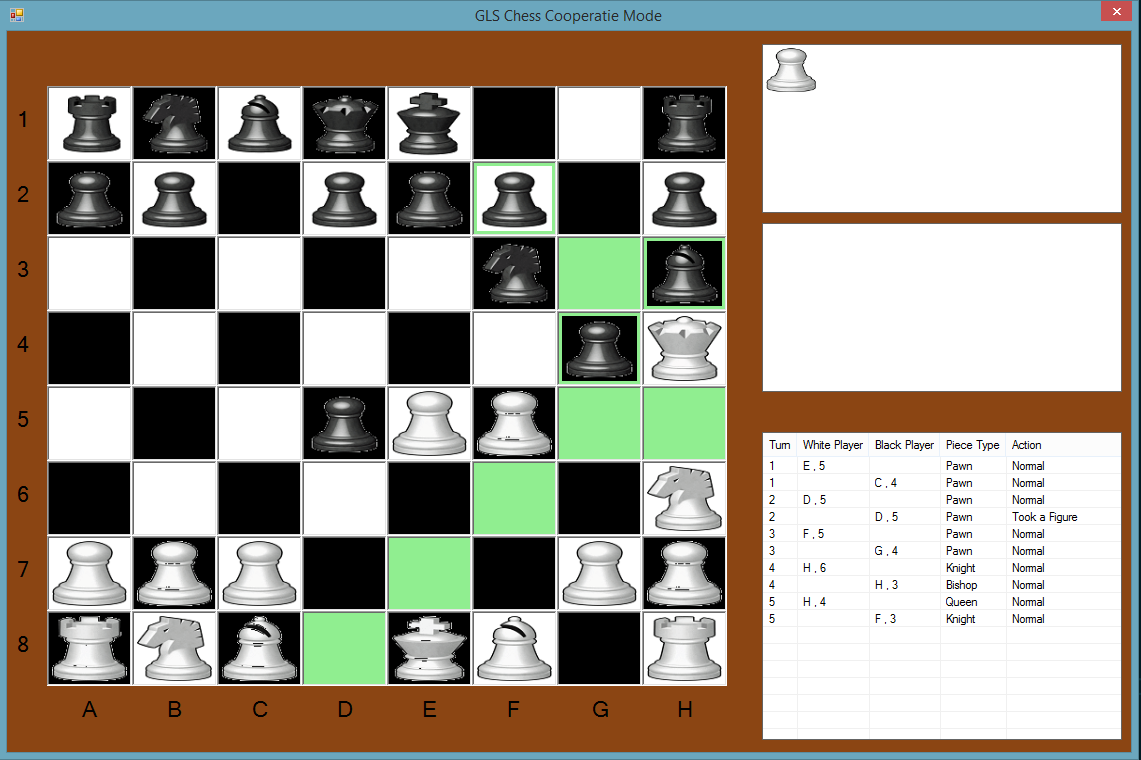Levels 1-3 will be tactics, things computer systems do perfectly. You need to perform these responsibilities when it is usually your use move. Level 4 is positional thinking, which you perform in order to` s the opposition` s turn to be able to move. Positional view involves tradeoffs, so deciding what to be able to do is additional of your art than a science.
Degree One Checks and even Checkmate Dangers
Find all of the checks. Examine every one. In the event you notice a sequence leading to a pushed win, play this.
In case you don` capital t visit a sequence that leads to some pushed win, then take a look at all of typically the opponent`s investigations. In the event you see the sequence that leads in order to a forced loss, prevent it.
Get all of your moves that threaten to checkmate on the following move. If your adversary can`t end the mate, perform the threatening shift.
If you don` to see an unstoppable checkmate threat regarding you, then look at your opponent` t options. If he or she can threaten to be able to checkmate you, prevent it.
If right now there will be no dangerous check or checkmate hazards, examine all of the possible records.
Level Two Reflects
Find all your captures. If any of these win material, find the particular the one which wins the particular most.
Find all your opponent` h captures. If some of these win material, get the one that benefits probably the most.
Compare. In case your best capture wins more substance than his finest capture, play the capture. If his best capture wins more material than your best get, prevent his record.
In capturing sequences, watch out regarding in-between moves exactly where the opponent performs something other than the expected recapture.
When there are no bank checks or captures that win material, appearance for threatening movements.
Level Three Dangers
Find the biggest threat for each side. If yours is the biggest, play it. When his is the particular biggest, avoid that.
Examples of Hazards
Simple Attacks (For example a pawn move that episodes a knight. )
Forks (One item attacking two parts in different instructions. All pieces may fork. )
Skewers (A bishop, rook, or queen problems two pieces about the same series. A line is actually a rank, file, or even diagonal. If the particular attacked piece moves, the main one behind that can be grabbed. )
Double Checks (One piece movements with check, whilst a piece driving it also offers check. )
Uncovered and Double Assaults (Your piece movements, exposing panic anxiety attack by simply another one of your respective pieces against a good opponent`s part. If the relocating piece also can make a threat that is called the double attack. )
Pins (A pinned piece can often be successfully attacked by a pawn. In addition, it loses command over squares this would normally manage so those pieces can be utilized by the attacker. )
Trapped Parts (Pieces that possess nowhere to maneuver when attacked by pawns. Bishops are usually often trapped by pawns. )
Pawn Promotion (Safely finding a pawn through to the eighth ranking is a frequent winning idea. )
Overloaded Pieces (A piece may end up being tied down to be able to guarding more compared to one square. Shifting a piece to one of those potager forces the defender to give up the security of the other square.
Measurement sacrifices. A piece moves, frequently a new sacrifice, to let an additional piece occupy the previous square in addition to create powerful hazards.
Level Four Positional Ideas
If there are no checks, catches or threats, look for approaches to strengthen your position, or even weaken the opposition` s. There are usually many positional suggestions to choose coming from. Here are a few key suggestions.
Opponent`s Plan
Consider, What really does my opponent want to do? When it is dangerous, stop it.
Item Placement
Identify your own most inactive part and try to be able to find a much better square for this.
Pieces that can make many goes are stronger as compared to those with much less choices.
Pieces which can be blocked by your own pawns or perhaps pieces are poorly placed.
Pieces of which threaten to get the opponent` h pieces or pawns are well located.
Pawns and Pieces
Pawns are most effective when they are side by aspect.
Pawns that are doubled, backward, or perhaps isolated are weaker.
It is generally smart to push typically the rook pawn on front of your own castled king to prevent back row checkmates. However, this can make it easier for your opponent to trade off the pawns in entrance of your california king.
If you are usually behind in enhancement it is generally a bad idea to create pawn moves.
When there are no pawns on typically the central files that is usually a new bad idea to move pawns until typically the ending is arrived at.
A powerful square is usually one which the piece cannot be attacked by enemy pawns. Usually https://caseychesstutoring.com is inside the center or in the foe` s half involving the board.
The weak square any that needs to be able to be guarded by way of a piece.
The squares in front involving weak pawns are often weak since enemy pieces can easily sit there safely.
King Safety
In case a king lacks pawn cover, or if an attacker has even more pieces than the particular defender within the sovereign` s vicinity, the particular king is susceptible to attack.
With all the center files clogged by pawns some sort of king is frequently safer in the particular middle than getting castled.
If a number of of the meeting place files are open up, the kings are generally safer being castled.
If kings citadel on opposite sides, the participant whose pawns attack the adversary king fastest typically wins.
If the particular enemy has a queen, or two rooks, keep the full in a safe put.
When several bits are already exchanged, the particular king is usually safe from checkmate and should become used actively.
Materials and Deals
In case you are forward in material simply by a piece or more, you perform not need in order to win more material. Play it free from harm.
The first principle is always? Don` t allow counterplay.
Aim for even trading to try and reach some sort of winning ending.
Protect your king!
Carry out not trade down all of the pawns.

If you are right behind in material the particular ending is dropped so avoid even trades.
Your finest chance is to be able to try to checkmate your opponent.
Attempt to make exchanges which in turn unbalance the material: knight for bishop, rook and pawn for two minor pieces, and so forth. Unbalancing typically the pieces makes it harder for the opponent to buy and sell down into a new won ending.
General Principles
If your own opponent has a poor piece, limited inside its movements, never exchange it.
In case your opponent has a new piece which can move to numerous squares or is performing a crucial task, try in order to trade for doing it.
In case your opponent provides two pieces that want to occupy a similar square to become effective, avoid exchanging them.
Following the beginning stage, if the opponent lacks space intended for his pieces, steer clear of piece trades.
The exchange of in fact one set of bits is often adequate to relieve some sort of cramped position.
